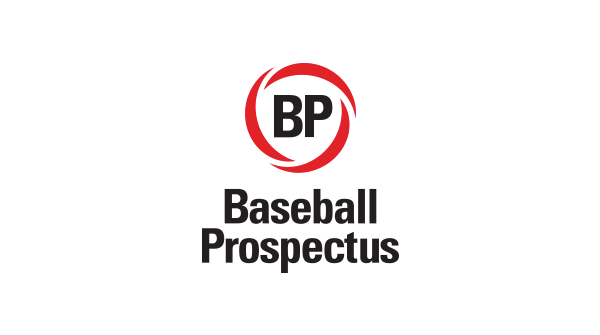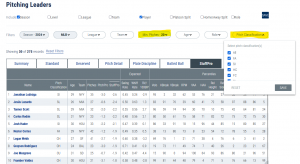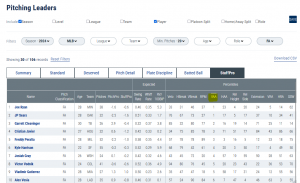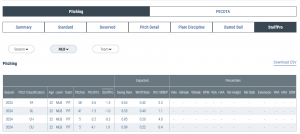
Right before (domestic) Opening Day last week, we unveiled our pitch quality metrics StuffPro and PitchPro, featuring a breakdown of how they work and showcasing some data from the 2023 season. We’ve also been sprinkling the arsenal specific ratings of pitchers into our “What’s Next?” section of each Box Score Banter column so far, to give you a sense of how good each pitch is for those particular matchups. What we didn’t have to that point, given the season hadn’t started (outside of two games for two teams) was either historical leaderboards or 2024-specific info. That’s changed.
If you head over to our pitching leaderboards and click on the right-most tab labeled “StuffPro,” you will be treated to the 2024 leaders in stuff. As a reminder, StuffPro and PitchPro are produced on a run value scale, which means that lower is better, since preventing runs is the name of the game. That means the best values will be negative and the more negative, the better the stuff is. The default sort will be StuffPro, but all of the columns are sortable, and you can filter out (or in) as many pitches as you’d like using the right-most filter as shown below:

You’ll also note that I’ve highlighted the minimum pitches filter. I selected “20” for this image, but the default sort will be zero, so don’t be surprised if you get some interesting results the first time you look at the leaderboards, since it’s possible some small-sample weirdness shows up.
You’ll also note some additional columns to the right of PitchPro and StuffPro, too. First up are the “expected” grouping of swing rate, whiff rate, and RV (run value) per 100 BIP (balls in play). These are fairly straightforward categories, telling us which pitches are expected to elicit swings, swings and misses, and how good they are at suppressing hard contact. And together, they shed light on the ultimate ratings from StuffPro and PitchPro, as Stephen Brown notes here, with an example using 2023 values:
To the right of the “expected” metrics, we have a whole slew of stats under the “percentile” banner. These are to provide context, telling you what percentile of each stat the various pitches occupy. These percentiles come from comparisons within a specific pitch grouping. So fastballs are compared to each other, which includes four-seamers, sinkers, hard cutters (cutters used as a fastball), etc. Splitters, though often called a split-fingered fastball, are grouped among changeups, and so on.

One thing to note on these: While some categories are straightforward to understand—99th percentile HMov (horizontal movement) means a pitch is among the most movement within its broader pitch grouping—others are perhaps less so. For a metric like VAA (vertical approach angle), lower is often better in terms of angle. Similarly, a lower percentile represents a lower (better) approach angle. As such, in the image above, you are seeing the top-10 pitchers for four-seam fastball VAA, despite it showing a “first percentile” rating for Joe Ryan and JP Sears.
We also have this data showing up on player cards! As with the leaderboard, head to any pitcher’s player card and select the rightmost tab labeled “StuffPro” and you’ll be treated to their StuffPro and PitchPro ratings and the “expected” metrics as on the leaderboard, as you can see in our example from Jared Jones of the Pirates, below:

We are resolving a technical reason regarding the percentiles not showing up on player cards at the moment, but those are all available on leaderboards as noted, and we hope to have them on individual cards shortly.
***
We’re extremely excited to bring you these features, and will continue building on them going forward. If you aren’t a subscriber yet, what are you waiting for? Every subscription helps us continue to develop new products and upgrade existing ones, so we can keep doing stuff like this. Check us out, you won’t be sorry.
Thank you for reading
This is a free article. If you enjoyed it, consider subscribing to Baseball Prospectus. Subscriptions support ongoing public baseball research and analysis in an increasingly proprietary environment.
Subscribe now